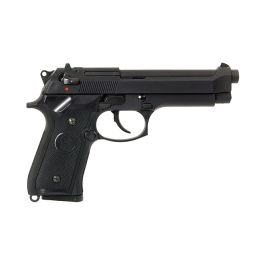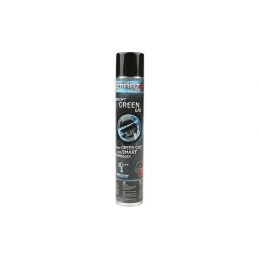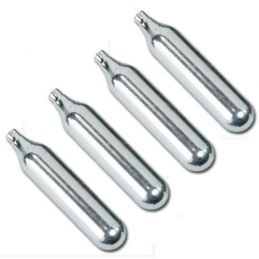
Understanding the Differences: CO2 vs. Green Gas Airsoft Pistols
In the world of airsoft, players often debate the merits of different types of propulsion systems for their pistols. Among the most popular options are CO2 and green gas-powered pistols. While both serve the same purpose of propelling airsoft BBs, they have distinct differences in performance, convenience, and maintenance. Understanding these variances can help players make informed decisions when selecting their preferred sidearm for skirmishes. Let's delve into the disparities between CO2 and green gas airsoft pistols.
1. Propulsion Mechanism:
CO2 (Carbon Dioxide):
CO2 airsoft pistols utilize small, disposable cartridges containing pressurized carbon dioxide gas. These cartridges are typically punctured upon insertion into the pistol, releasing the gas to propel the BB. CO2 provides a consistent and powerful shot, making it suitable for various weather conditions. However, the power output may decrease as the cartridge nears depletion.
Green Gas:
Green gas, also known as propane with added silicone oil, is the primary propellant for many airsoft pistols. It comes in refillable canisters and is loaded into the gun's magazine. When the trigger is pulled, the gas is released, propelling the BB forward. Green gas pistols often have a more realistic recoil feel compared to CO2 pistols due to the slower gas release.
2. Performance:
CO2:
CO2 pistols tend to offer higher velocities and consistent performance, especially in colder temperatures. The pressurized CO2 gas provides a reliable shot with minimal cooldown between shots. This makes CO2 pistols popular for outdoor games and scenarios where accuracy and power are crucial.
Green Gas:
Green gas pistols may exhibit more variation in performance, particularly in colder weather, as the pressure inside the magazine can drop with decreasing temperatures. However, they often provide a smoother shooting experience with a more realistic recoil feel. With proper maintenance and care, green gas pistols can perform admirably in various conditions.
3. Convenience and Maintenance:
CO2:
CO2 pistols are generally more convenient for extended gameplay sessions as they do not require refilling during matches. However, players must carry additional CO2 cartridges for prolonged engagements. Maintenance typically involves ensuring the seals are lubricated to prevent leaks and maintaining the integrity of the cartridges.
Green Gas:
While green gas pistols require periodic refilling with gas, players can carry spare canisters for quick reloads during breaks in the action. Maintenance involves regular lubrication of the pistol's seals and occasional cleaning of the magazine and gas delivery system. Some players appreciate the ability to control the amount of silicone oil added to the gas, which can help maintain the pistol's longevity.
4. Cost:
CO2:
The initial cost of CO2 pistols is often slightly higher than green gas pistols due to the need for disposable CO2 cartridges. However, the ongoing cost per shot may be lower since CO2 cartridges are typically less expensive than green gas canisters.
Green Gas:
While the initial investment in a green gas pistol may be lower, players will incur ongoing costs for purchasing green gas canisters. However, the refillable nature of green gas canisters can be more environmentally friendly and cost-effective in the long run for frequent players.
Conclusion:
Both CO2 and green gas airsoft pistols offer distinct advantages and drawbacks, catering to different player preferences and playing conditions. CO2 pistols provide consistent power and performance, making them ideal for outdoor play and colder climates. On the other hand, green gas pistols offer a more realistic shooting experience and can be more cost-effective in the long term. Ultimately, the choice between CO2 and green gas pistols boils down to individual preferences regarding performance, convenience, and maintenance requirements.
Linked products
Airsoft Green Gas with Silicone Oil, 1 liter
Airsoft CO2 Cartridges, 5 pcs







